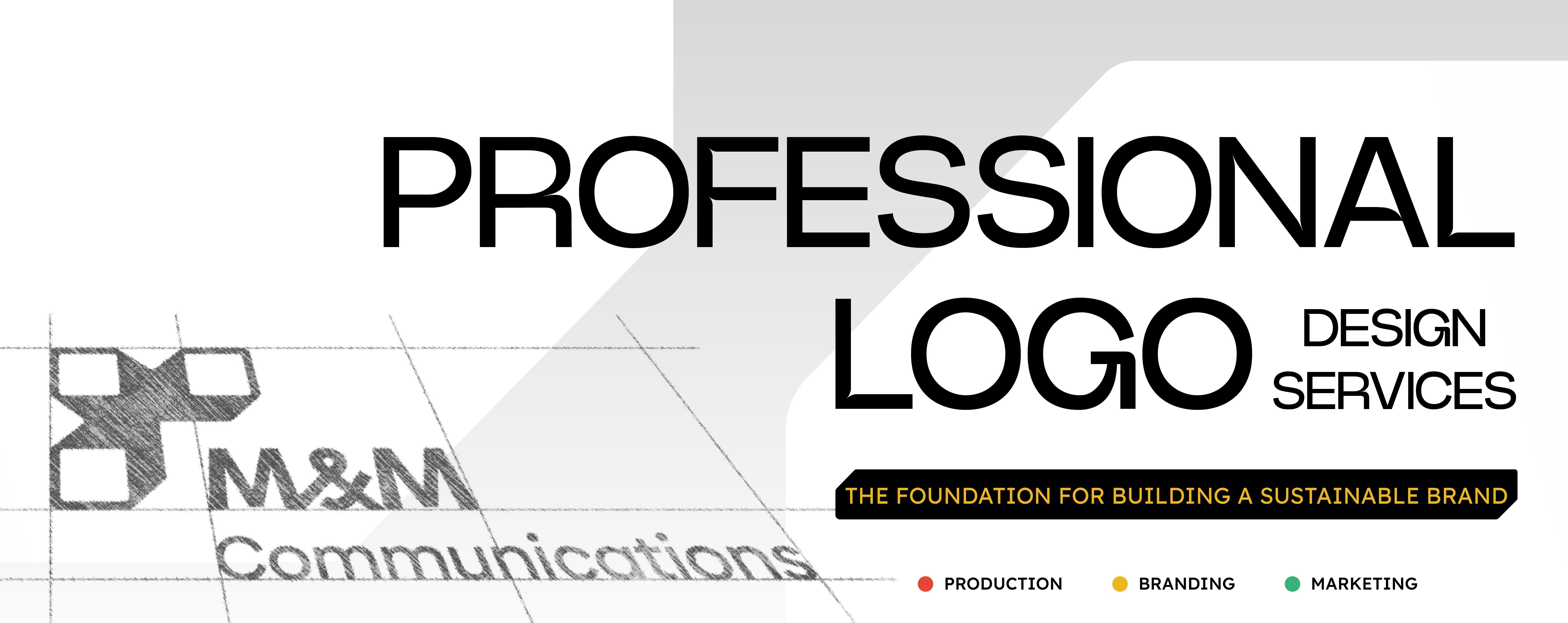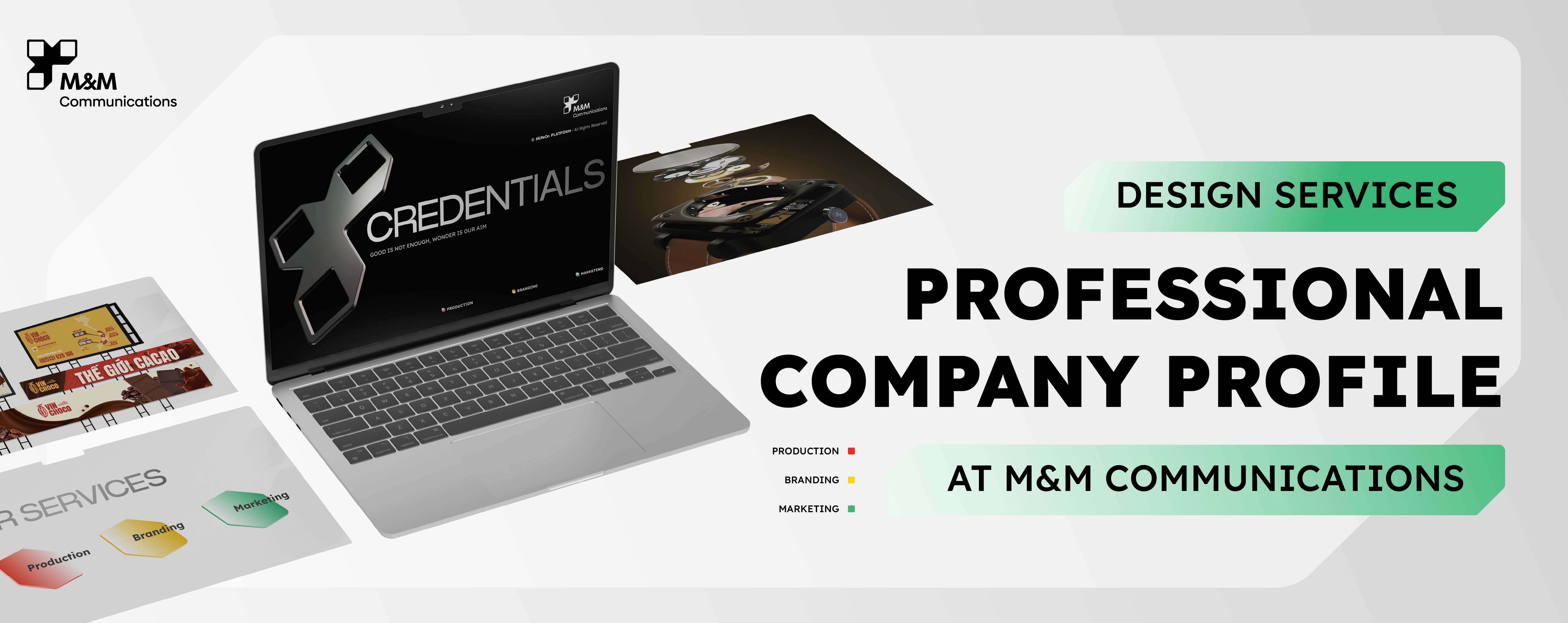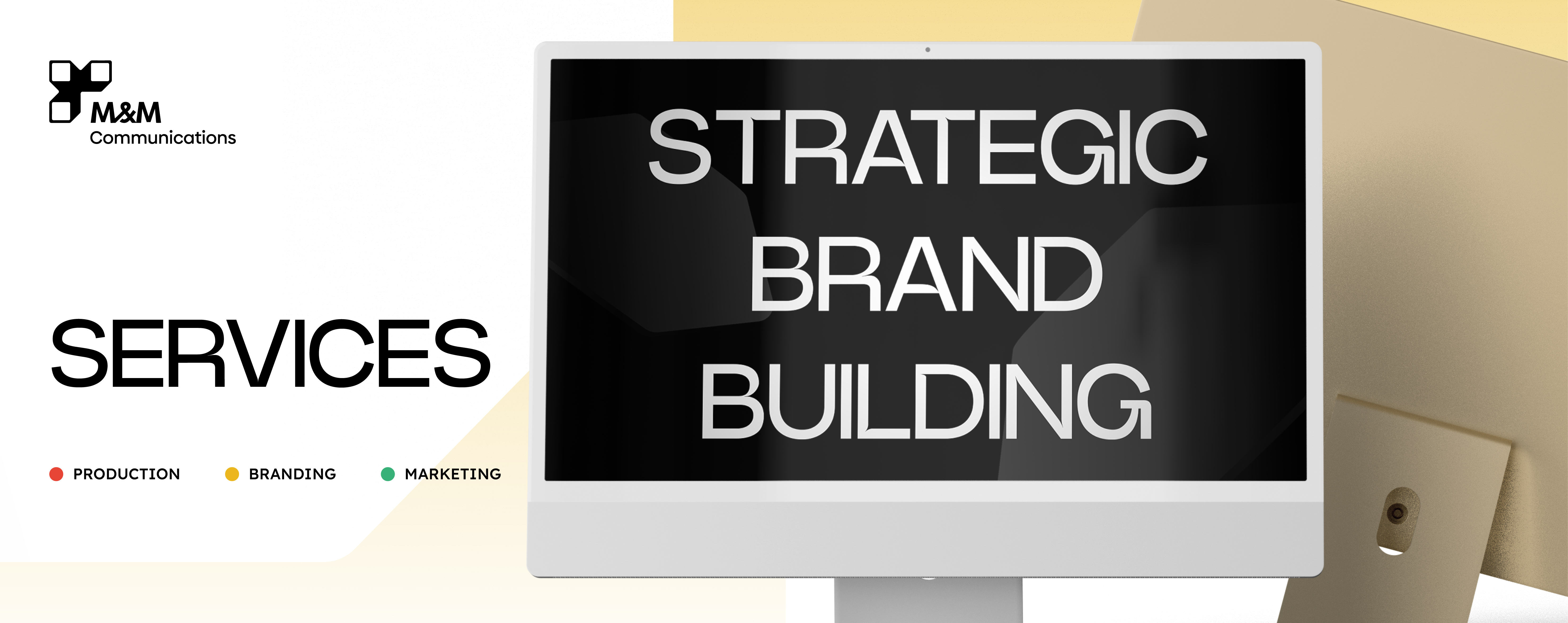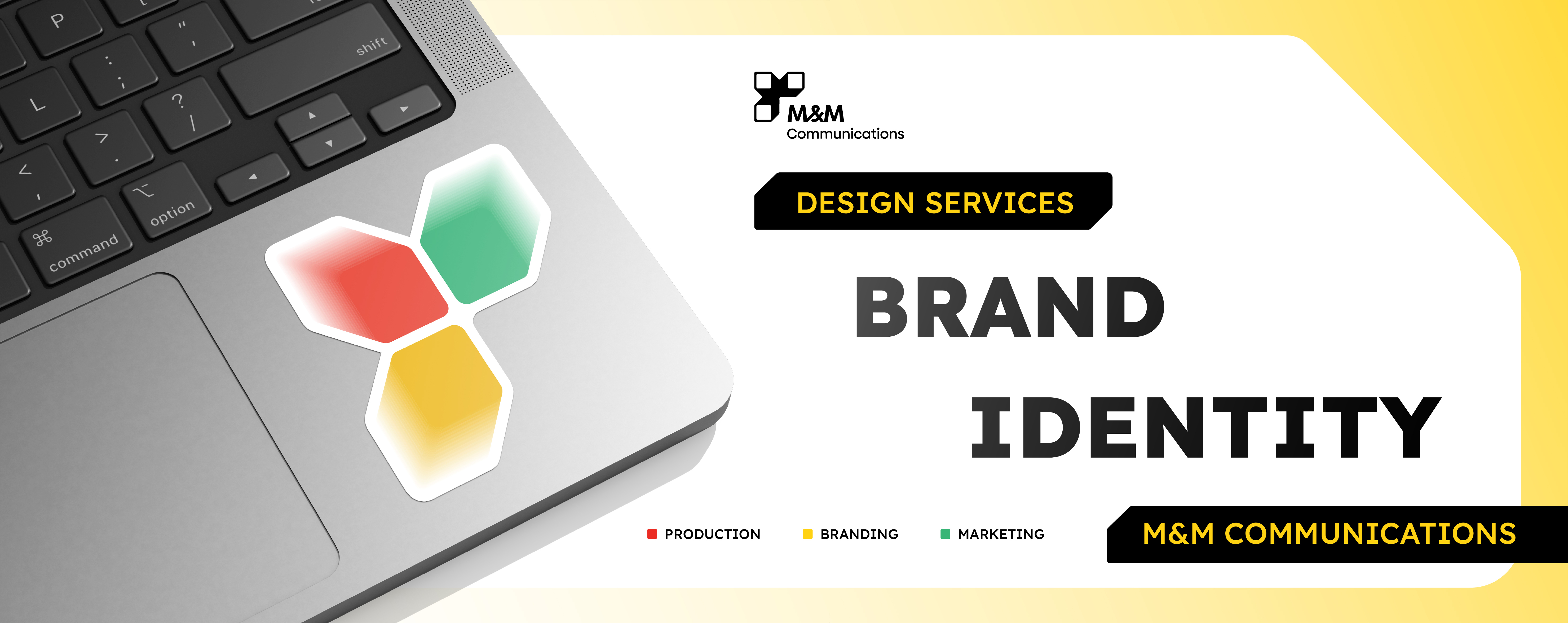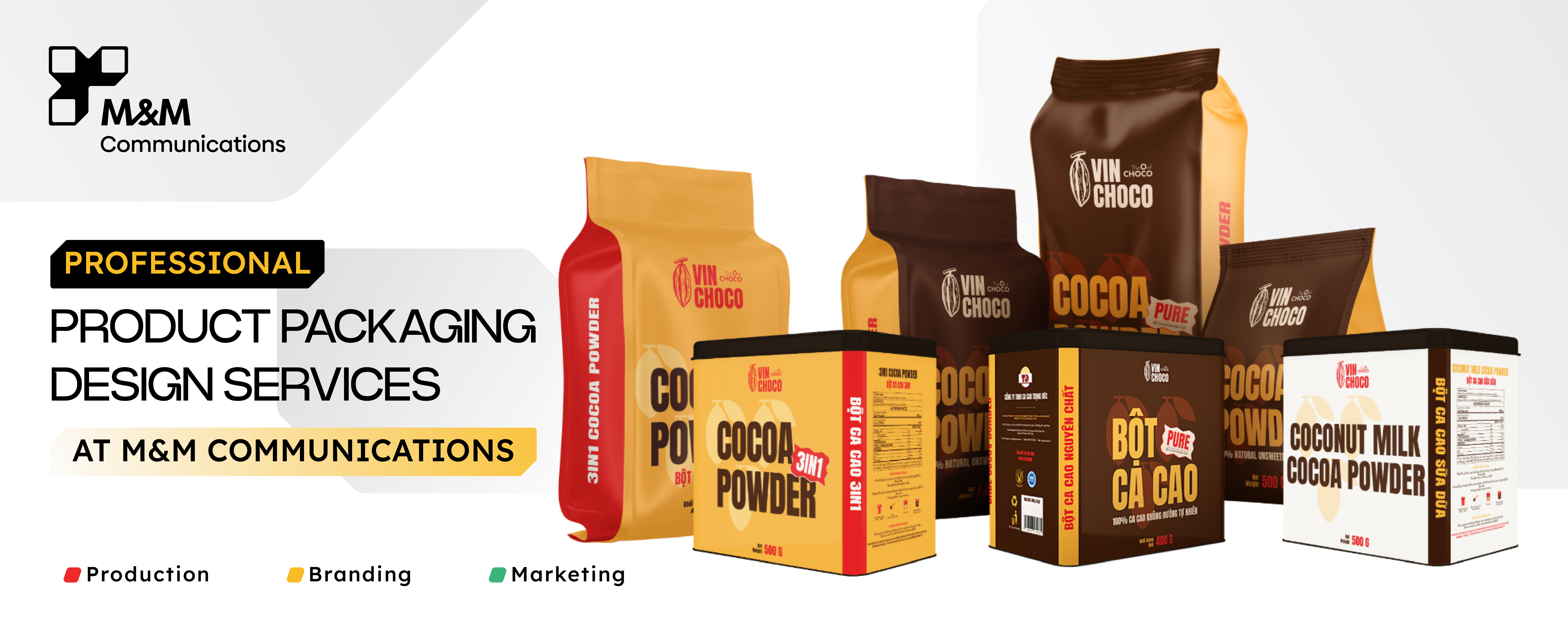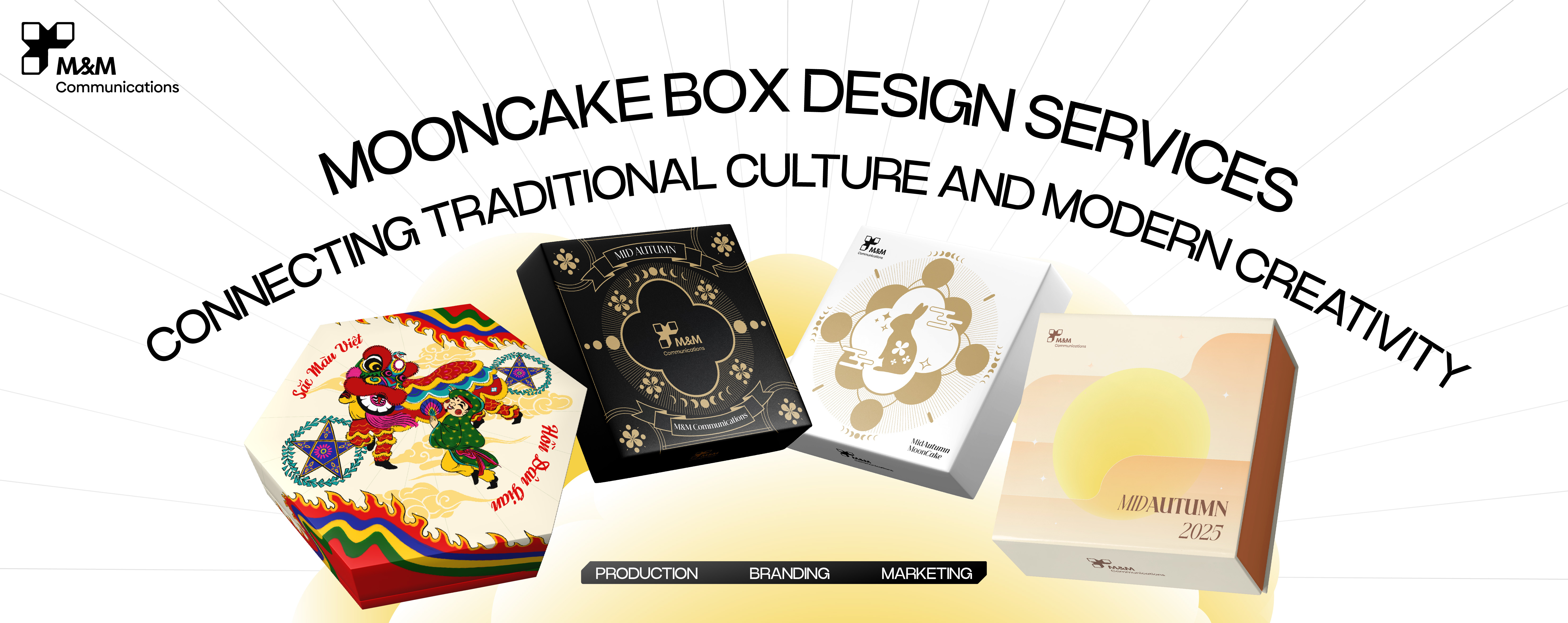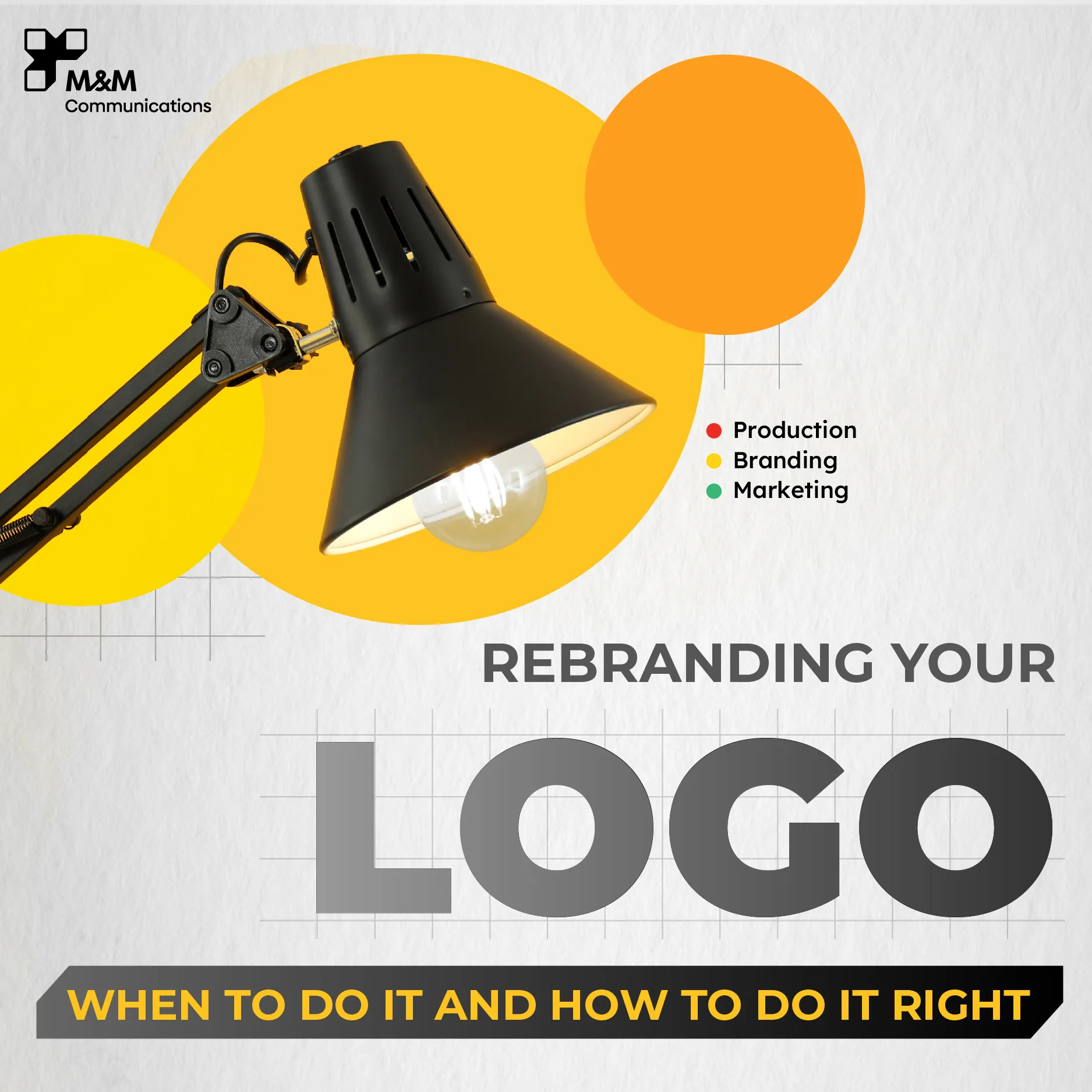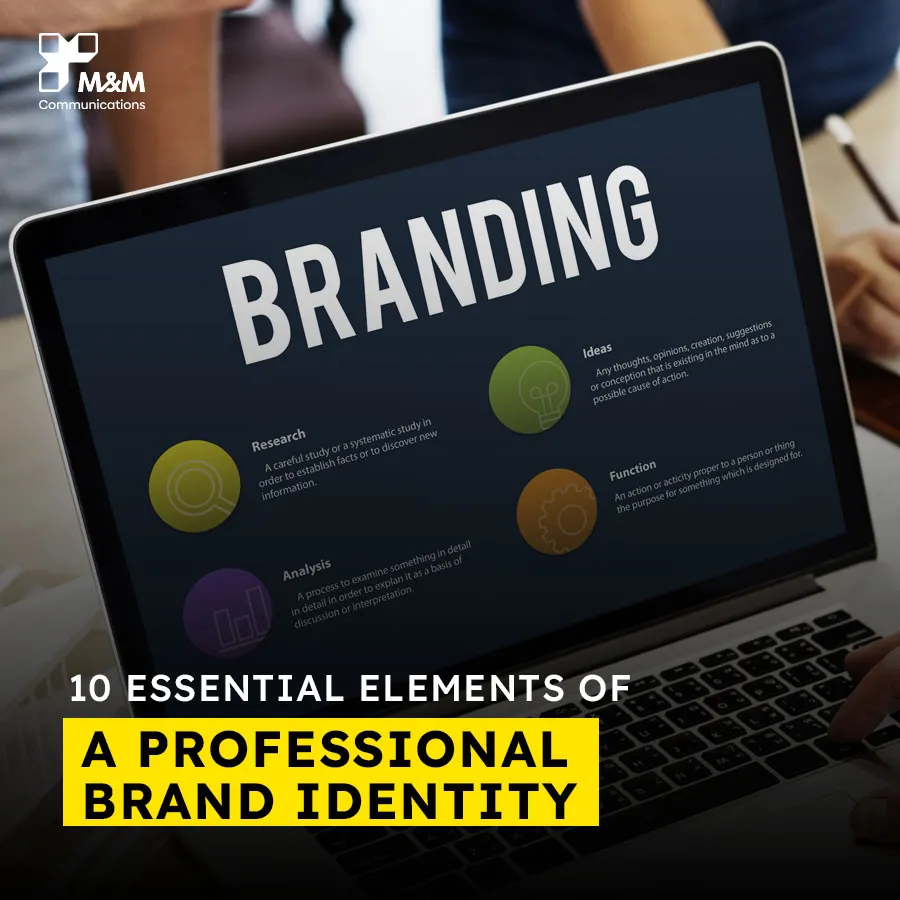
In today’s competitive business environment, a brand identity is not just a logo or color palette—it is a complete system of visuals that helps businesses create lasting impressions and stay top of mind. A professional brand identity builds trust, enhances brand value, and creates a long-term competitive advantage.
At M&M Communications, we have worked with many brands to design and refine their identity systems. Below are 10 key elements that every professional brand identity must include.
1. Logo – The “Face” of the Brand

The logo is the core element, appearing on every asset from online platforms to offline materials. A professional logo should:
Be simple, memorable, and recognizable.
Reflect the brand’s personality and core values.
Be highly adaptable across different sizes and materials.
>>> Rebranding Your Logo: When To Do It And How To Do It Right
2. Brand Colors (Color Palette)
Colors evoke emotions and ensure visual consistency. A professional palette usually includes:
Primary colors that embody the brand’s spirit.
Secondary colors for balance and support.
Guidelines for both digital (RGB/HEX) and print (CMYK, Pantone).
3. Typography
Typography may seem small, but it plays a vital role in shaping a brand’s character. A professional system defines:
Primary fonts for headlines.
Secondary fonts for body text.
Rules for size, spacing, and combinations.
4. Visual Style
Beyond logo and colors, visual style creates a recognizable look and feel:
Photography direction: minimalistic, modern, luxurious, or traditional.
Guidelines for icons, illustrations, and product imagery.
Consistency across websites, social media, brochures, and ads.
5. Stationery Design
Professional businesses need cohesive stationery to build trust with partners:
Business cards.
Letterheads.
Envelopes, folders, pens, notebooks, etc.
All should be designed consistently according to brand guidelines.
6. Digital Assets
In the digital era, online branding is essential:
Social media profile and cover images.
Website banners and email signatures.
Social media post templates.
Consistent digital assets ensure the brand is recognizable across all platforms.
7. Packaging Design

For product-based businesses, packaging directly connects with customers:
Packaging design should stand out on shelves.
Clearly communicate the brand’s essence.
Use eco-friendly solutions to enhance sustainability.
8. Marketing & Communication Collateral
Campaign materials are also part of brand identity:
Catalogs, brochures, and leaflets.
Posters, standees, and advertising banners.
Key visuals for seasonal or product launch campaigns.
These must all align with the overall identity system.
9. Brand Guideline
A brand guideline ensures long-term consistency:
Instructions for correct logo usage.
Rules for colors and typography.
Design principles for digital and print assets.
Practical examples across various applications.
10. Brand Experience

Finally, brand identity extends beyond visuals into the overall customer experience:
A user-friendly website interface aligned with the brand’s look.
Office or store spaces designed in line with the brand style.
Employee communication, from emails to presentations, reflects the brand tone.
Conclusion
A professional brand identity provides the foundation for a strong, consistent, and sustainable brand image. From logo and colors to digital and offline applications, every element must be thoughtfully designed and aligned with the brand guidelines.
At M&M Communications, we don’t just design brand identities—we partner with businesses to build long-term branding strategies. Let us help you create a professional identity that elevates your brand in the eyes of customers and partners.
